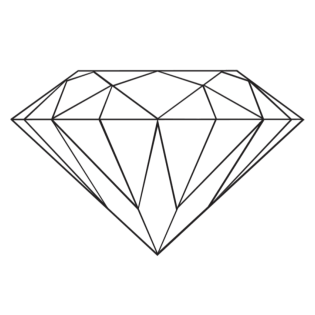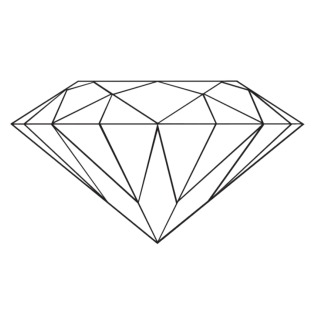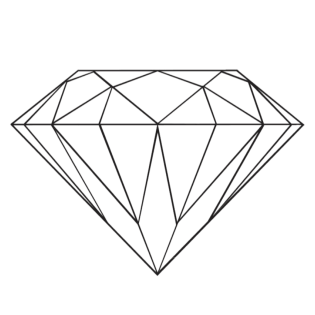(4) ITEMS IN MY CART

Go shop and fill your cart
Covid - 19 - A message to our Syndiora customers
Read More
Diamond is considered the world’s most valued natural resource, and of course, people’s favorite gemstone. A Diamond is made with a massive variety of characteristics, making each diamond unique. The combinations of these characteristics regulate the quality and worth of a diamond.
What are the Four C’s & why do I have to know about them?
The Four C's signify Cut, Color, Clarity, and Carat Weight. The diamond grading system is used by nearly every professional in the industry and diamond admirers across the globe. Because every diamond immensely varies in quality and price, it is extremely important for consumers to be familiar with the Four C’s. We’ve bordered the basics of this grading system below, to help educate you before you make your purchase.
The 4C’s of a diamond determine the price of a diamond. These include a diamond’s Carat weight, Color, Clarity, and its Cut. While the first three are natural elements, the fourth one depends on the quality of the artistry.
If you are considering buying a Diamond, it is important that you consider each “C” to differentiate a Diamond based on the grading terms of Four C’s.
The cut is the principal factor in creating sparkle and fire, and without a high cut grade even a diamond of high quality can appear lifeless. A diamond that is cut poorly and too deep can appear smaller than it actually is. A well-cut diamond will let in more light through the crown. A diamond with a depth that is too shallow will allow light to escape through the sides or from the foot of the stone. The diamond cut is the most important component to consider when buying a diamond. A diamond’s Clarity, Color and Carat weight cannot be altered, but it is a high-quality Cut of diamond that can release the extravagant shine.

A well-cut diamond will reflect the light back through the crown and into the observer’s view.
Cutting a diamond too shallow or too deep will cause light to escape through the lower part of the diamond reducing the diamond’s shine.


A deep cut diamond has a similar effect as that of the shallow cut; it deflects light through the pavilion thereby causing deflection.
A diamond’s cut grade is the only factor that is swayed by a human hand. A master cutter will novice for at least 10 years before touching a 1 carat diamond. These highly-skilled artisans bring the ultimate beauty of the diamond to life by obeying specific parameters in order to maximize shine. Several individual factors are weighed to determine the cut grade of a diamond including its proportions, profundity, symmetry, polish and finish.
The GIA uses the following scale to rate round diamonds:
| Excellent | An excellent cut diamond has a supreme amount of sparkling, brilliance and fire. Light enters the diamond and detours back out with very little light lost. This special grade represents roughly the top three percent of diamonds. |
| Very Good | A diamond with a very good cut grade will reflect most of the light and will appear similar to an ideal cut diamond. This diamond will have superior vivacity, brilliance and fire. |
| Good | Dazzling most of the light entering the diamond, this diamond cut has above average beauty. Diamonds with this grade will not have as much brilliance and fire as higher cuts. |
| Fair | Diamonds graded “Fair” do not have the optimum brilliance and fire, as they allow a substantial amount of the entering light to exit on the bottom or side of the diamond instead of through the top. These still have quality, but not nearly as well performing as a finer cut. |
| Poor | Diamonds with a poor cut may appear gloomy because the majority of the light is lost through the bottom or sides of the diamond. With a noticeable decrease in shine, even an amateur eye can see a sharp difference between this and higher cuts.. |
This refers to the inclusions (internal) or flaws (external) held by the stone. A diamond’s Clarity is detected under a 10X loupe magnification with the highest grading called “Flawless” which has no internal or external blemishes. Flawless and Internally Flawless diamonds are extremely rare. We then enter the territory of VVS, VS, SI and I, where all include variations of the word imperfect such as Very Very Slightly Imperfect, Very Slightly Imperfect, Slightly Imperfect and Imperfect.
Note: These terms shall not affect your experience when looked with naked eye.
.gif)
| Flawless (FL) | A Diamond that is graded Flawless contains no additions or flaws apparent to the grader under magnification. |
| Internally Flawless (IF) | These diamonds do not contain any additions but may comprise a very small flaw under magnification. |
| Very, Very Slightly Included (VVS1, VVS2) | These diamonds may comprise additions which are so minute that they barely are visible, even to the trained grader under magnification. |
| Very Slightly Included (VS1, VS2) | These diamonds comprise minor additions that are not visible to the naked eye, but are apparent under magnification. |
| Slightly Included (Sl1, Sl2) | These diamonds contain additions that are clearly visible under magnification, and can occasionally be seen with the naked eye under close detection. |
| Included (I1, I2, I3 | These diamonds comprise observable additions that are almost visible to the naked eye. |
Diamonds are classified/graded in Color from D to Z, the scale starts with D (No Color) and finishes at Z (Light Yellow or Brown). A Colorless stone will refract maximum amount of light. Therefore, the whiter the stone is, the more expensive its price. Rephrase
The GIA (Gemological Institute of America) grades the diamond color on a scale of D to Z (also known as White Diamonds)Most Diamonds include and G color ?with varying amounts of color. Rephrase
It is tedious to identify the difference from one color grade to another. The importance to compare diamonds side by side therefore is important. ‘Colorless’ Diamonds are the rarest, therefore expensive. Yellow is comparatively least rare and therefore inexpensive.

Fancy colored diamonds are not graded on the same scale as ‘No Color’ diamonds and are comparatively rare, making them more valuable and expensive.
Diamond Carat is often misconstrued and refers to a Diamond’s weight and not necessarily its size. When comparing Diamond carat sizes, take a diamond’s cut into reflection as well: a high-carat diamond with a poor cut grade may look slightly smaller, often cut deeper, than a diamond with smaller carat weight and a better cut.

"Syndiora" was added to wishlist